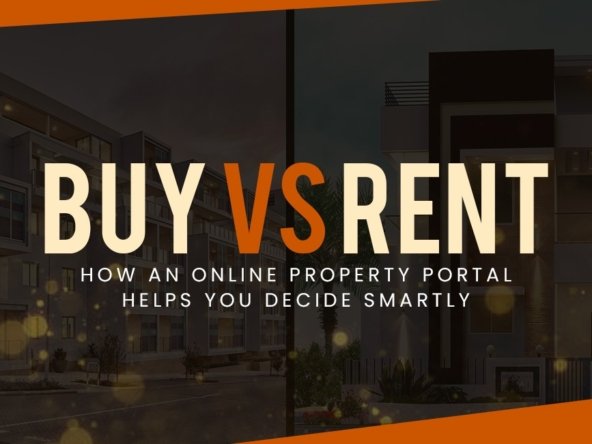The Indian real estate market has always been one of the most complex sectors when it comes to taxation. Between stamp duty, registration charges, service tax (before GST), and various state-level levies, buyers often found it difficult to calculate the “all-inclusive” price of a property. However, with the introduction of the Goods and Services Tax (GST) in 2017, there was a shift towards a more unified tax structure. Fast forward to September 2025, and we now have GST 2.0 – a new tax regime that promises to simplify the property buying process even further.
In this blog, we’ll explore how GST 2.0 impacts real estate, what rate rationalisation means for buyers, and how an Online Property Portal can make navigating these changes easier than ever.
Understanding GST 2.0 and Its Relevance in Real Estate
The government’s introduction of GST 2.0 is part of a larger reform agenda aimed at simplifying India’s indirect tax system. Real estate, being a sector that directly affects millions of homebuyers and investors, is one of the biggest beneficiaries of this reform.
Earlier, property buyers faced confusion due to multiple slabs of GST on construction materials, services, and under-construction properties. Cement, for instance, was taxed at a steep 28%, tiles and marble at 18%, and steel at varying rates. Developers often passed these costs onto the buyers, making homes expensive.
GST 2.0 changes this picture by rationalising rates across categories, ensuring uniformity and affordability. By lowering taxes on key construction materials and aligning slabs with industry realities, the government is not just simplifying compliance for developers but also reducing the effective tax burden on buyers.
Key Features of GST 2.0 Rate Rationalisation
- Reduced GST on Construction Materials
- Cement has been slashed from 28% to 18%.
- Tiles, marble, and granite have also seen significant reductions.
- This means overall construction costs go down, and buyers can expect more competitive pricing.
- Cement has been slashed from 28% to 18%.
- Simplified Slabs for Housing
- Affordable housing continues to attract lower GST rates (around 1%).
- Mid-segment housing sees a simplified uniform rate instead of multiple slab divisions.
- Luxury housing, though taxed higher, benefits from clearer classification.
- Affordable housing continues to attract lower GST rates (around 1%).
- Input Tax Credit (ITC) Improvements
- Developers now have better clarity on how much ITC they can claim on raw materials.
- This reduces disputes and ensures buyers are not unfairly burdened.
- Developers now have better clarity on how much ITC they can claim on raw materials.
- Transparency for Buyers
- Clearer rate charts and fewer slabs mean buyers can easily calculate their final tax liability.
- No hidden costs or unexpected charges during the final agreement.
- Clearer rate charts and fewer slabs mean buyers can easily calculate their final tax liability.
How It Benefits Property Buyers
The biggest question for buyers is simple: Does GST 2.0 make property cheaper? The answer is yes, particularly for those investing in under-construction projects.
- Lower Base Costs: With cheaper construction inputs, developers can pass on savings.
- Predictable Pricing: Buyers no longer have to worry about sudden jumps in GST due to slab confusion.
- Faster Project Completion: Reduced costs may encourage developers to speed up project delivery.
- Wider Choice: With rate rationalisation, more projects will become viable, increasing supply in the market.
The Role of Online Property Portals
In today’s digital age, buyers rarely visit a project without first checking it online. An Online Property Portal plays a crucial role in helping buyers understand the new GST regime. Here’s how:
- Real-Time Price Transparency
Leading portals can now display property prices with updated GST 2.0 benefits factored in, allowing buyers to see accurate “all-inclusive” costs. - Educational Resources
Many property portals are publishing guides, blogs, and FAQs to simplify GST 2.0 for first-time buyers. - Comparison Tools
Buyers can compare GST-inclusive pricing across different projects to identify the best deals. - Developer Verification
Portals ensure that only RERA-registered projects are listed, building trust and transparency—especially important when tax reforms are new. - Lead to Expert Advice
With integrated chatbots and consultant services, an Online Property Portal can instantly connect buyers with tax experts or real estate consultants who explain the GST implications.
Long-Term Impact on Real Estate
GST 2.0 is not just a tax reform—it’s a structural reset for the real estate sector. Over the next few years, we can expect:
- Increased Demand for Under-Construction Homes
Buyers previously hesitant due to high GST on unfinished projects may now invest confidently. - More Affordable Housing Launches
Developers can take advantage of lower costs to launch budget-friendly homes. - Healthy Market Competition
With pricing clarity, developers will compete on quality and delivery rather than tax loopholes. - Digital Transformation
Online Property Portals will emerge as the go-to platforms for tax-inclusive property searches.
Tips for Buyers Navigating GST 2.0
- Always Check Final Pricing: Ensure the builder provides a breakup with GST clearly mentioned.
- Use Online Tools: Leverage property portals to compare GST-inclusive prices.
- Look for Transparency: Prefer developers who pass on tax benefits openly.
- Consult Professionals: If unsure, get advice from a real estate consultant or legal advisor.
- Don’t Overlook Stamp Duty & Registration: Remember, GST 2.0 doesn’t replace these charges.

Conclusion
The introduction of GST 2.0 rate rationalisation marks a turning point for India’s property market. By reducing construction costs, simplifying slabs, and ensuring transparency, it has made the process of buying a home much smoother for buyers. While challenges like stamp duty and registration charges remain outside the GST framework, the overall impact is positive for both developers and buyers.
For home seekers, the key is to stay informed and leverage digital tools. An Online Property Portal can serve as your one-stop destination to explore projects, compare GST-inclusive prices, and connect with experts. With these resources at your fingertips, navigating the new tax landscape becomes not just simpler, but also empowering.



